16 Most Famous Portrait Paintings in the World: Must Know
Posted by MintSuper Art on 15th Jan 2025
Portrait paintings have always been a special way for artists to show what people look and feel. Many artists have used portraits to express more than just physical appearance. These most famous paintings don’t just capture faces—they tell stories about who the person was, how they felt, and even their place in society. They keep memories alive, letting future generations see and connect with people from the past. Other artists have embraced this genre to reveal the emotional depth and character of their subjects, creating lasting visual narratives.
What Are Portrait Paintings?
Famous portrait paintings are artworks that show what a person looks like, focusing on their face, expressions, and posture. But they do more than just show a picture—they bring out the person’s personality, mood, or role in life. These paintings can be realistic or abstract, made with oil paint, acrylic, or watercolor. For centuries, famous portrait paintings have been an important part of art, giving us a glimpse into the lives and stories of people from all different times.
Famous Portrait Paintings and Their Stories
The legacy of portrait paintings extends far beyond their artistic beauty. They serve as historical records, reflecting the fashion, culture, and social hierarchies of their time. Famous paintings have influenced generations of artists, inspiring new techniques and styles while preserving the essence of their subjects for centuries.
Here are 16 famous portrait paintings and their stories that continue to remind us of their significance in the art world throughout history.
Mona Lisa (Leonardo da Vinci)
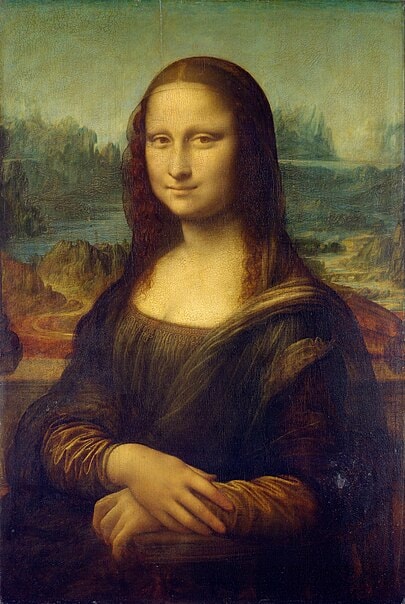
- Year: completed between 1503 and 1506.
- Medium: Oil on poplar wood
- Dimensions: 77 cm × 53 cm (30 in × 21 in)
- Location: Louvre Museum, Paris
Leonardo da Vinci, the Renaissance polymath who painted the Mona Lisa, was a master of painting, anatomy, and engineering. He is widely regarded as one of the greatest artists in history. The painting portrays a woman with an enigmatic smile against a hazy background. Her subtle expression and Leonardo’s sfumato technique create a lifelike and mysterious quality. This painting is famous for its mysterious smile, detailed craftsmanship, and innovative blending of light and shadow.
Girl with a Pearl Earring (Johannes Vermeer)
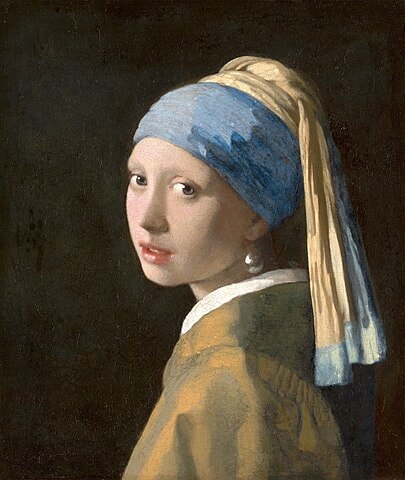
- Year: 1665.
- Medium: Oil on canvas,
- Dimensions: 44.5 cm × 39 cm (17.5 in × 15.3 in)
- Location: Mauritshuis, The Hague, Netherlands
Johannes Vermeer, a Dutch Baroque painter who painted the Girl with a Pearl Earring, was celebrated for using light and intimate, tranquil domestic scenes. The painting captures a young girl turning toward the viewer, adorned with a pearl earring and a turban. The interplay of light and shadow gives her an ethereal glow. Known as the “Mona Lisa of the North,” it is celebrated for its simplicity, elegance, and Vermeer’s skill in using light.
The Arnolfini Portrait (Jan van Eyck)
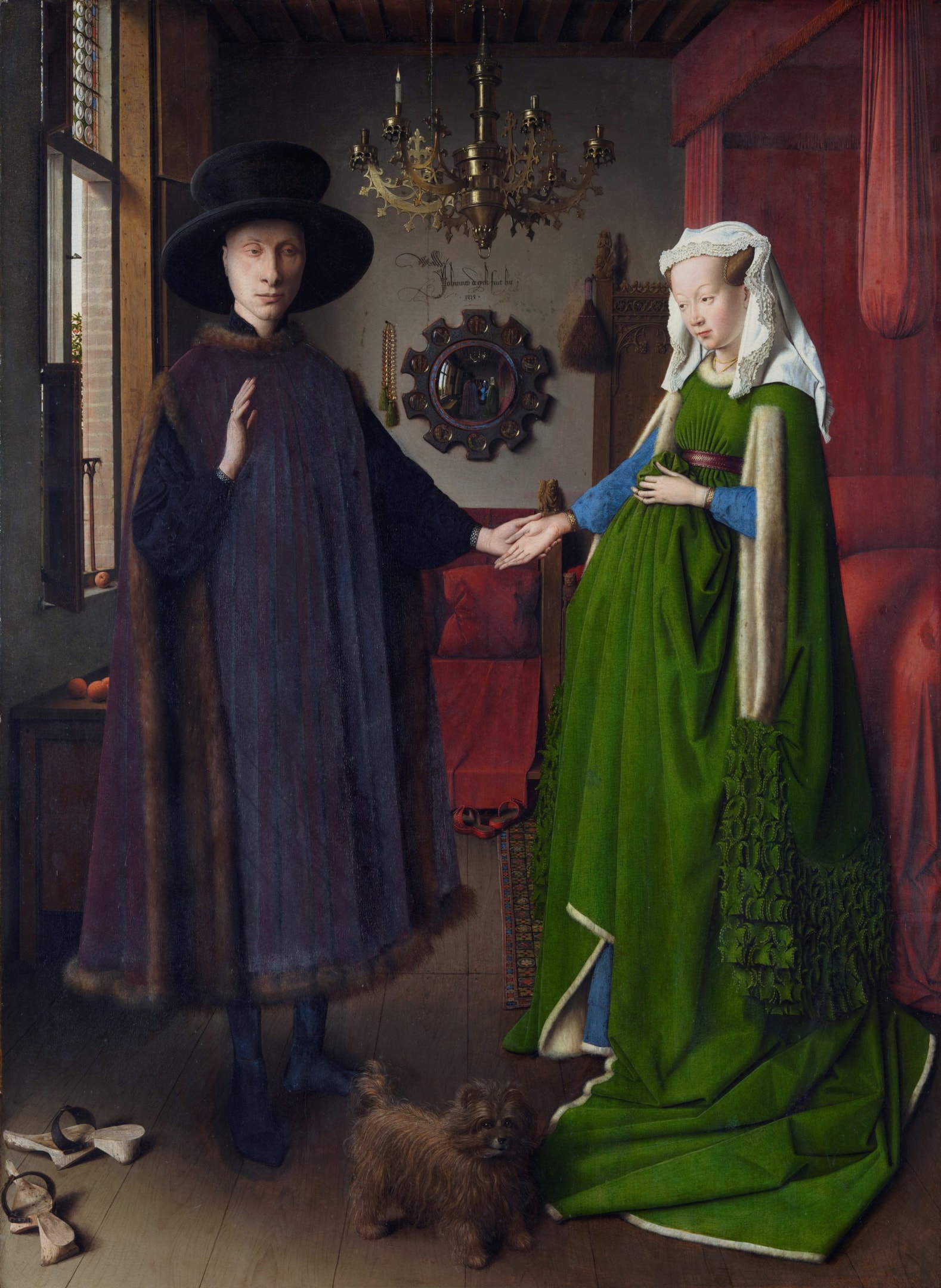
- Year: 1434.
- Medium : Oil on oak panel
- Dimensions: 82.2 cm × 60 cm (32.3 in × 23.6 in)
- Location: National Gallery, London
Jan van Eyck, a Flemish painter who painted The Arnolfini Portrait, was a pioneer of oil painting and known for his intricate and detailed works. This double portrait depicts a couple in a domestic setting with intricate details symbolizing wealth and faith. The painting is famous for its realism, symbolic elements, and the artist’s pioneering use of oil paints.
American Gothic (Grant Wood)
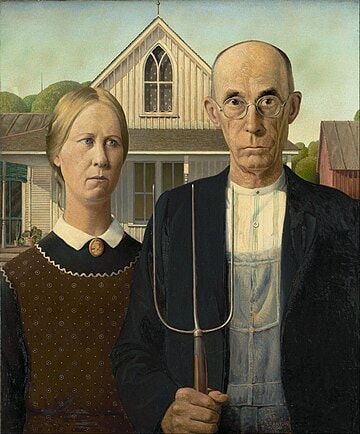
- Year: 1930.
- Medium: Oil on beaverboard
- Dimensions: 74.3 cm × 62.4 cm (29.2 in × 24.6 in)
- Location: Art Institute of Chicago
Grant Wood, an American painter who painted the American Gothic, was a key figure in the Regionalist art movement, focusing on rural American themes. The painting features a stern farmer and his daughter in front of a Gothic-style farmhouse. It captures the resilience and simplicity of rural life and has become an iconic representation of American culture.
Self-Portrait with Thorn Necklace and Hummingbird (Frida Kahlo)
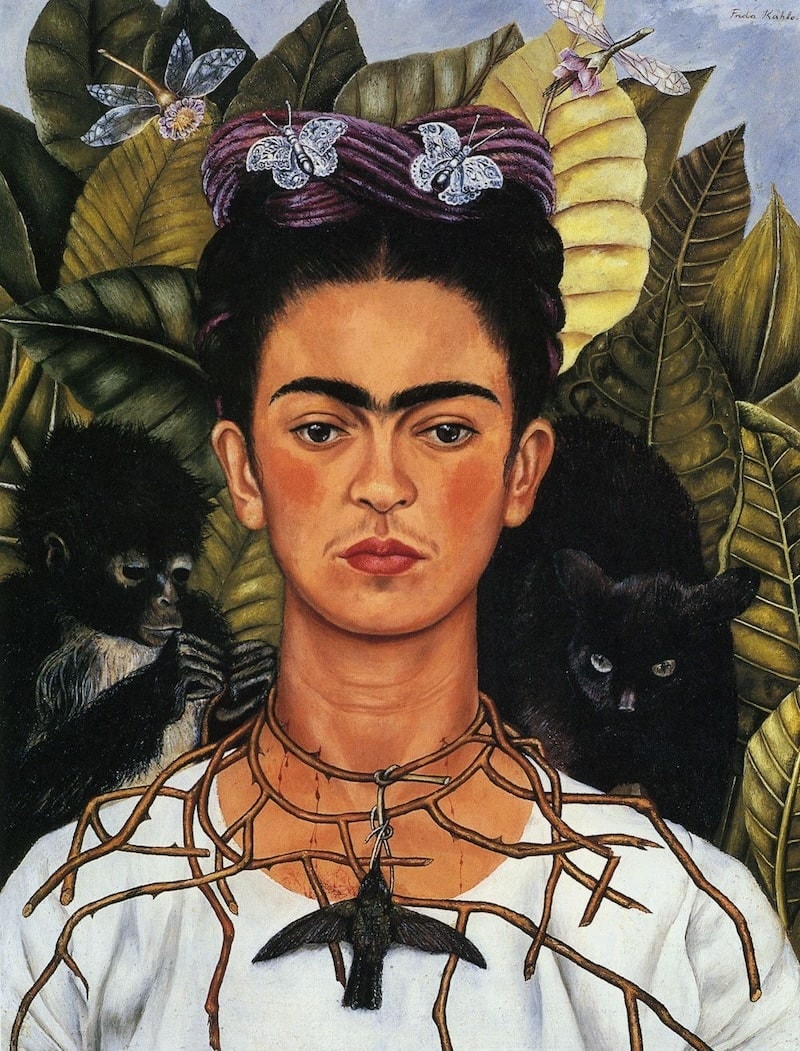
- Year: 1940
- Medium: Oil on canvas
- Dimensions: 61 cm × 47 cm (24 in × 18.5 in)
- Location: Private collection
Frida Kahlo, a Mexican painter, is celebrated for her vivid self-portraits that reflect her physical and emotional struggles. In her self-portrait Self-Portrait with Thorn Necklace and Hummingbird, she is shown wearing a thorn necklace with a hummingbird and surrounded by symbolic elements. The painting is admired for its vivid symbolism and reflection of his struggles and resilience.
Portrait of Baldassare Castiglione (Raphael)
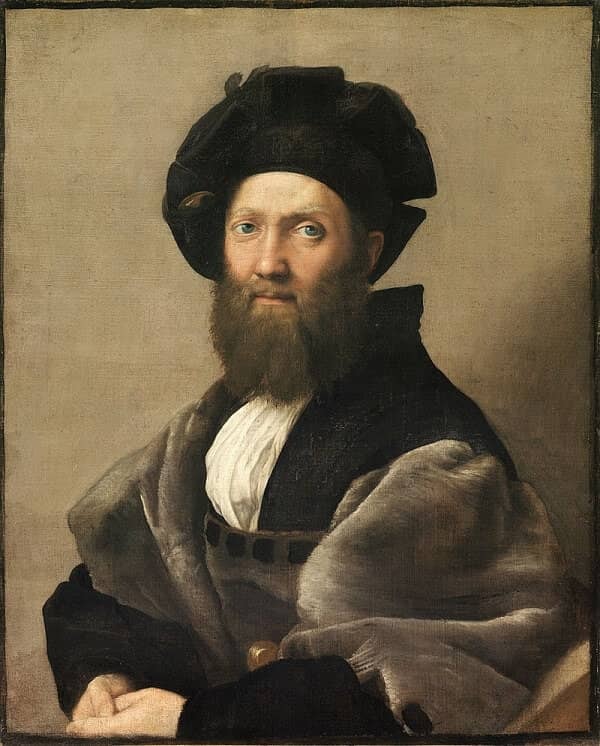
- Year: c. 1515
- Medium: Oil on canvas
- Dimensions: 82 cm × 67 cm (32.3 in × 26.4 in)
- Location: Louvre Museum, Paris
Raphael, an Italian High Renaissance artist, was renowned for his harmonious compositions and depictions of grace and beauty. His Portrait of Baldassare Castiglione shows the sitter in elegant attire, exuding sophistication and poise. The painting is celebrated for its balanced composition and Raphael’s exquisite rendering of textures and expressions.
The Night Watch (Rembrandt)
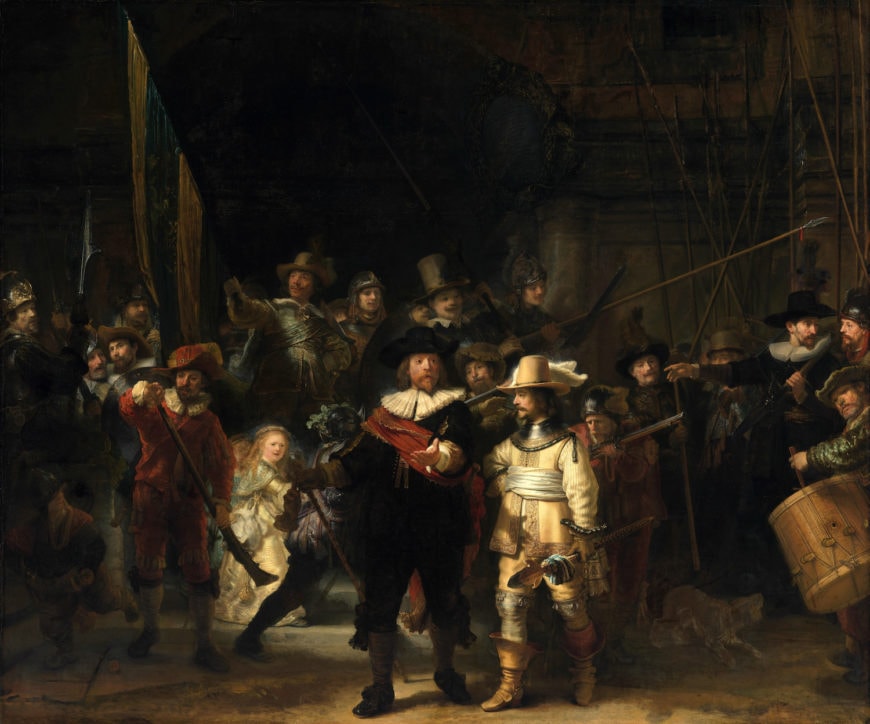
- Year: 1642.
- Medium: Oil on canvas
- Dimensions: 363 cm × 437 cm (143 in × 172 in)
- Location: Rijksmuseum, Amsterdam
Rembrandt, a Dutch Golden Age painter, is renowned for his dramatic use of light and shadow in his portraits and historical scenes. This dynamic group portrait of a militia company shows vivid details, dramatic lighting, and bold poses. The Night Watch is famous for its innovative composition and the surprising use of chiaroscuro.
Madame X (John Singer Sargent)
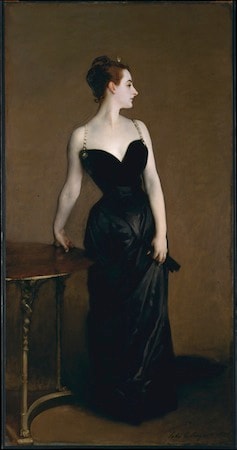
- Year: 1884
- Medium: Oil on canvas
- Dimensions: 234.95 cm × 109.86 cm (92.5 in × 43.3 in)
- Location: Metropolitan Museum of Art, New York
John Singer Sargent, an American expatriate and one of the most prominent portrait painters of the late 19th century, created this striking portrait of a woman in an elegant black gown, which exudes confidence and poise. Although initially controversial, the painting is celebrated for its sophistication and daring style.
Las Meninas (Diego Velázquez)
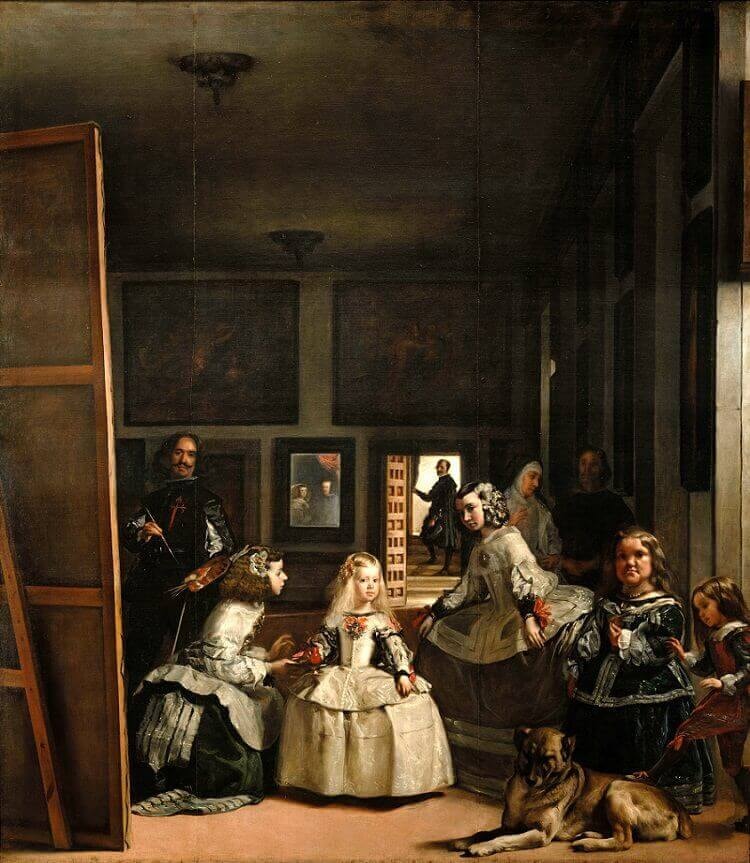
- Year: 1656
- Medium : Oil on canvas
- Dimensions: 318 cm × 276 cm (125.2 in × 108.7 in)
- Location: Prado Museum, Madrid
Diego Velázquez, the court painter for King Philip IV of Spain, was a famous artist of the Spanish Baroque period. This painting shows the royal family, with Velázquez himself included in the scene. It is admired for its clever design, use of perspective, and storytelling, highlighting his great talent.
Marilyn Diptych (Andy Warhol)
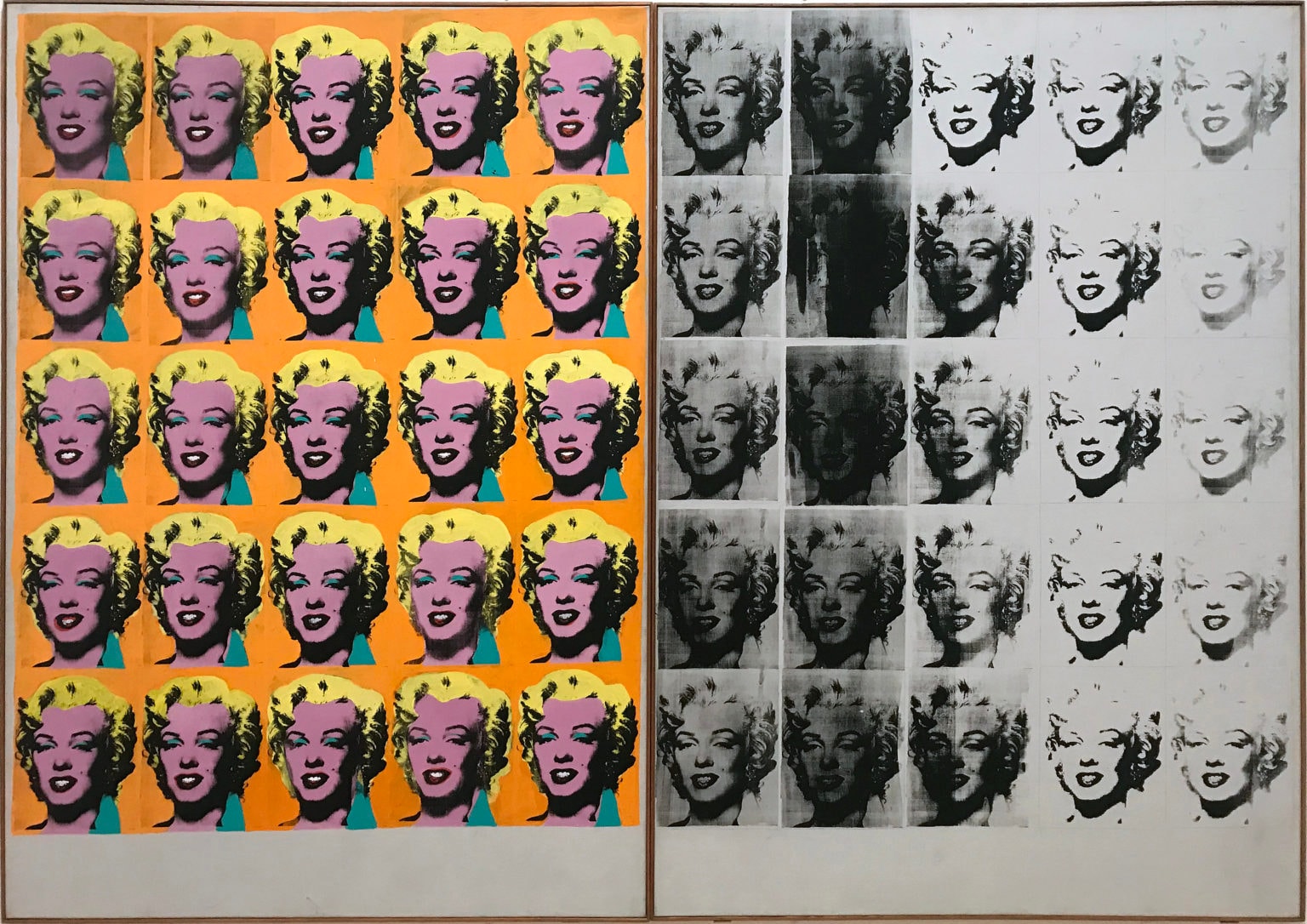
- Year: 1962
- Medium: Acrylic on canvas
- Dimensions: 205.44 cm × 289.56 cm (80.8 in × 114 in)
- Location: Tate Modern, London
Andy Warhol, an American artist and a key figure in the Pop Art movement, was known for his focus on themes like fame, consumerism, and mass production. This artwork presents 50 images of Marilyn Monroe, combining bright colors with black-and-white repetitions. It is renowned for its commentary on celebrity culture and the impact of consumerism.
Portrait of Adele Bloch-Bauer I by Gustav Klimt
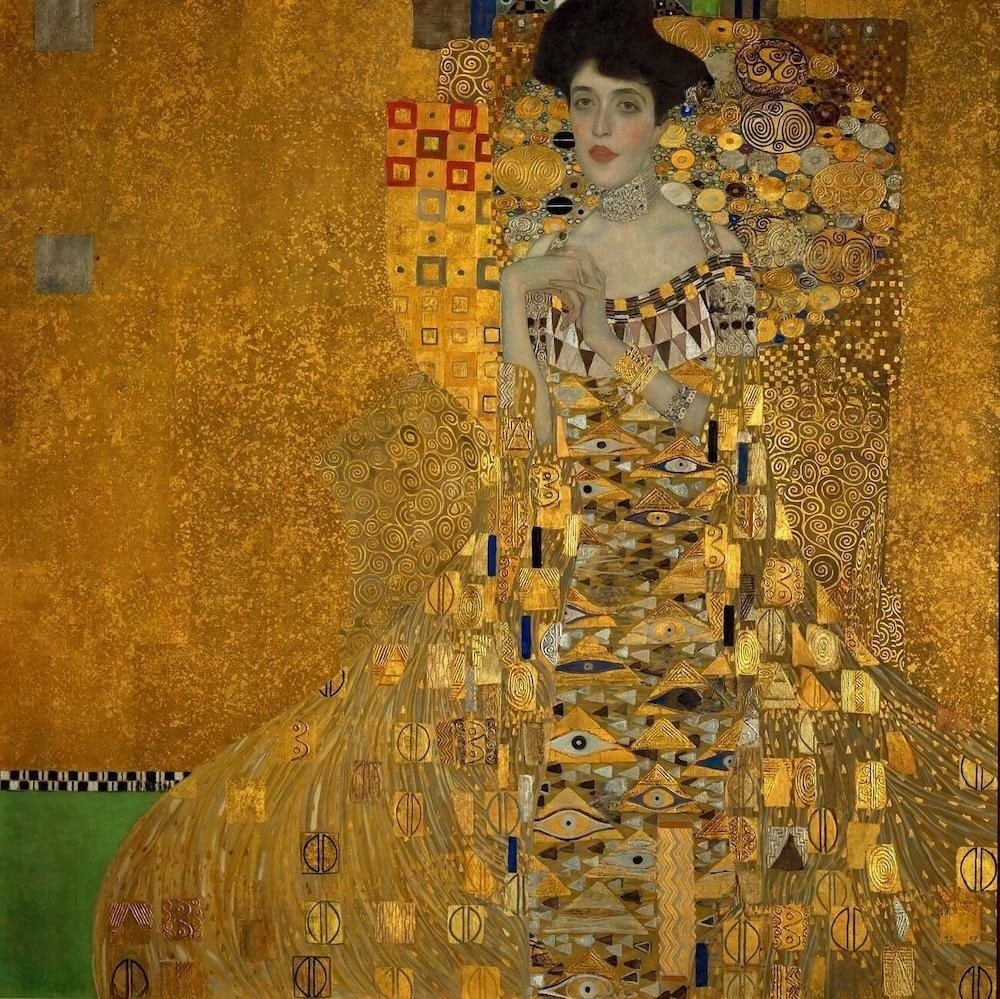
- Year: 1907
- Medium: Oil, silver, and gold on canvas
- Dimensions: 138 cm × 138 cm (54.3 in × 54.3 in)
- Location: Neue Galerie, New York
Gustav Klimt, an Austrian Symbolist painter, was renowned for his luxurious and decorative style, often incorporating gold leaf into his works. This golden portrait of Adele Bloch-Bauer merges realistic portraiture with intricate decorative patterns, earning admiration for its lavish details and symbolic depth.
Whistler’s Mother by James McNeill Whistler
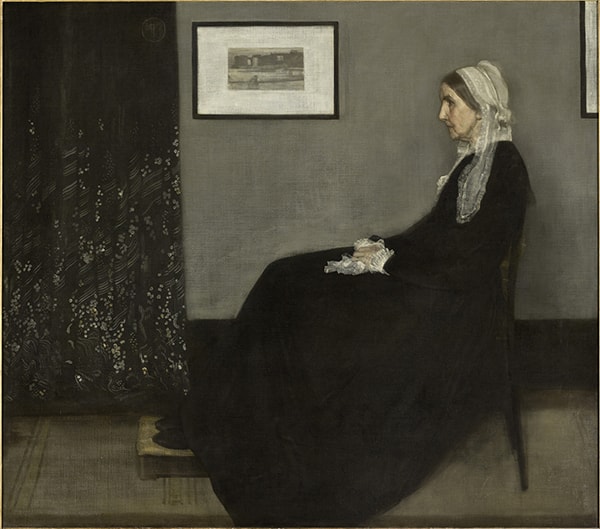
- Year: Completed in 1871
- Medium: Oil on canvas
- Dimensions: 144.3 cm × 162.4 cm (56.8 in × 63.9 in)
- Location: Musée d’Orsay, Paris
James McNeill Whistler, an American artist, believed in creating art for its beauty and balance. This painting shows Whistler’s mother sitting in profile, with a calm and dignified presence. It is loved for its simple style and deep emotion.
Portrait of Dora Maar by Pablo Picasso
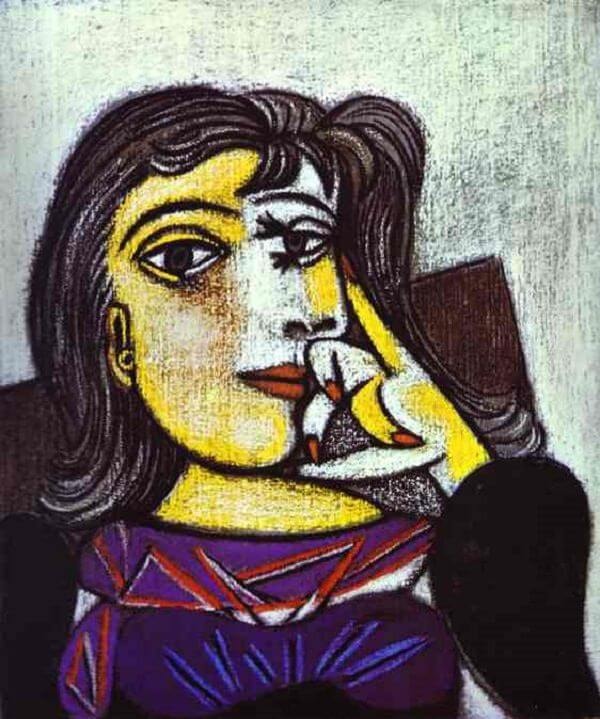
- Year: Completed in 1937
- Medium and: Oil on canvas
- Dimensions: 92 cm × 65 cm (36.2 in × 25.6 in)
- Location: Tate Modern, London
Pablo Picasso, a Spanish artist and co-founder of Cubism, changed the course of modern art. This abstract portrait of Dora Maar uses fragmented shapes to reflect his unique Cubist style. It is about strong emotions and a creative approach to depict a subject.
Napoleon Crossing the Alps by Jacques-Louis David
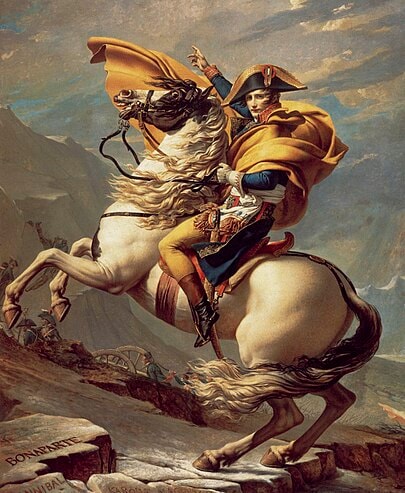
- Year: Completed in 1801
- Medium: Oil on canvas
- Dimensions: 260 cm × 221 cm (102.4 in × 87 in)
- Location: Louvre Museum, Paris
Napoleon Crossing the Alps by Jacques-Louis David, a French Neoclassical painter. He is known for his historical and political works. This dramatic portrait of Napoleon on a rearing horse symbolizes leadership and power. It is admired for its bold composition and historical significance.
The Laughing Cavalier by Frans Hals
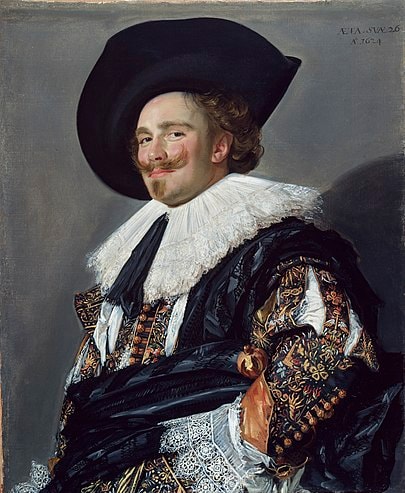
- Year: Completed in 1624
- Medium: Oil on canvas
- Dimensions: 83 cm × 67.3 cm (32.7 in × 26.5 in)
- Location: Wallace Collection, London
Frans Hals, a Dutch painter from the Golden Age, was famous for his vibrant and expressive portraits. This painting shows a cheerful man in fancy clothing, bursting with life and personality. It is admired for its energetic brushwork and emotional depth.
Portrait of Dr. Gachet by Vincent van Gogh
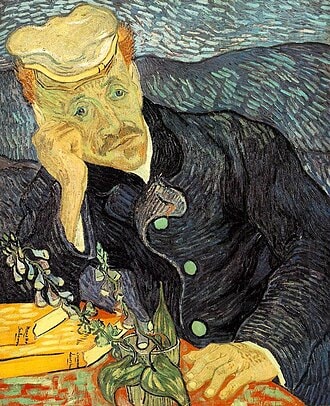
- Year: Completed in 1890
- Medium: Oil on canvas
- Dimensions: 67 cm × 56 cm (26.4 in × 22 in)
- Location: Private collection
Vincent van Gogh, a Dutch painter from the Post-Impressionist movement, is famous for his emotionally powerful and colorful artwork. This portrait shows Dr. Gachet with a sad expression, resting his head on his hand. It is well-known for its emotional depth and van Gogh's distinctive vibrant style.
Conclusions
These 16 famous portrait paintings show how art has changed and the important stories behind each one. These famous paintings give us a glimpse into the past, highlighting the skill and imagination of the artist. Whether you're an art lover or just curious, these portraits capture the lasting power of art.
Discover more amazing artworks on MintSuper Art.

